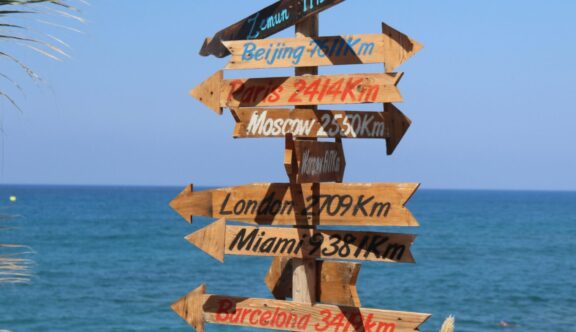The travel industry isn’t going “back to normal.” And for future-focused brands, that’s the best news in years. Our New Future Value report, Destination Disruption, unpacks the seismic shifts reshaping the way people travel – and reveals how ambitious, flexible brands are turning disruption into opportunity.
Covering trends from ‘bleisure’ to personalisation, this is your roadmap to travel marketing that engages audiences and drives growth.
1. The “new traveller” mindset
Consumers are cutting back on takeaways, gym memberships – even nights out – but they’re not giving up on holidays. Despite economic pressures, holidays remain emotionally and psychologically a non-negotiable.
33% say they plan to splurge on travel in the next 12 months, and 7 in 10 Brits are already saving up for their next trip.
What this means for marketers:
Flexibility is key. Offer payment plans, cancellation options, and show how your experience delivers value beyond price.
2. Luxury reimagined
Luxury is no longer about marble lobbies or the thread count of your sheets. Today’s high-end traveller wants connection, authenticity and transformation. They’re seeking private yoga retreats in the jungle, opportunities to feed their soul through giving-back, immersive eco-safaris, and experiences they can’t Google. And they’ll pay for it – 84% of luxury travellers are happy to invest in uniquely curated trips.
What this means for marketers:
Speak to the values of your audience – sustainability, wellness, culture – and personalise at every step.
3. Sustainable travel can’t be a side note
73% of UK adults are sceptical of sustainability claims in travel. That’s not just a PR risk, it’s a missed opportunity.
Brands like Byway (offering flight-free holidays) and Iberostar (carbon-neutral by 2030) are winning trust and share of wallet by walking the talk.
What this means for marketers:
Be transparent. Be specific. Educate your audience on what sustainable travel actually looks like – and how they can be part of it (but don’t make them feel that it’s coming at their expense).
4. Overtourism = opportunity
Venice is introducing visitor fees. Penang is banning short-term rentals. The fact is that popular places can’t cope with visitor numbers.
But here’s the upside: 66% of travellers want something different. They want to be offered quieter, alternative destinations.
What this means for marketers:
Leverage local knowledge. Highlight hidden gems. Position your brand as a guide to discovery – not just a booking engine.
5. AI Is reshaping the journey
From booking.com’s AI Trip Planner to ChatGPT-powered apps like Wanderlog, the travel planning experience is being reimagined by AI. But while automation wins on efficiency, human connection still wins on trust — especially in the premium space.
What this means for marketers:
Balance tech with touch. Use AI to streamline, but keep the personal elements that create loyalty.
So, what’s next?
Whether you’re a luxury operator, adventure brand or travel tech innovator, the message is clear: standing still isn’t an option. At StrategiQ, we help travel brands to optimise, accelerate and innovate with strategic marketing campaigns that build real future value.
Want to learn what’s working – and what’s next?
Download the full report.
Get in touch to talk strategy.
